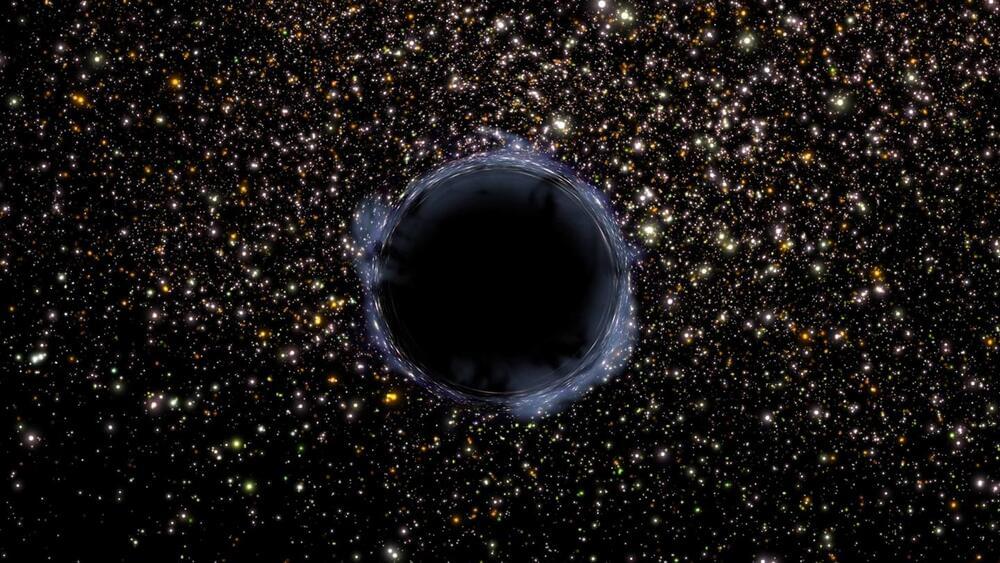The object could be the first isolated stellar-mass black hole identified in the Milky Way — or it might be an unusually heavy neutron star.




Circa 2020
You’ve no doubt heard of the Large Hadron Collider (LHC), the massive particle accelerator straddling the border between France and Switzerland. The large size of this instrument allows scientists to do cutting-edge research, but particle accelerators could be useful in many fields if they weren’t so huge. The age of room-sized (and larger) colliders may be coming to an end now that researchers from Stanford have developed a nano-scale particle accelerator that fits on a single silicon chip.
Full-sized accelerators like the LHC push beams of particles to extremely high speeds, allowing scientists to study the minutiae of the universe when two particles collide. The longer the beamline, the higher the maximum speed. Keeping these beams confined requires extremely powerful magnets, as well. It all adds up to a bulky piece of equipment that isn’t practical for most applications. For example, cancer radiation treatments with a particle accelerator could be much safer and more effective than traditional methods.
The team from Stanford’s SLAC National Accelerator Laboratory didn’t set out to build something as powerful as an accelerator that takes up a whole room. The chip features a vacuum-sealed tunnel 30 micrometers long and thinner than a human hair. You can see one of the channels above — electrons travel from left to right, propelled by 100,000 infrared laser pulses per second, all of them carefully synchronized to create a continuous electron beam.

A new side-channel attack known as Hertzbleed allows remote attackers to steal full cryptographic keys by observing variations in CPU frequency enabled by dynamic voltage and frequency scaling (DVFS).
This is possible because, on modern Intel (CVE-2022–24436) and AMD (CVE-2022–23823) x86 processors, the dynamic frequency scaling depends on the power consumption and the data being processed.
DVFS is a power management throttling feature used by modern CPUs to ensure that the system doesn’t go over thermal and power limits during high loads, as well as to reduce overall power consumption during low CPU loads.

Cybersecurity researchers have discovered adware and information-stealing malware on the Google Play Store last month, with at least five still available and having amassed over two million downloads.
Adware infections displaying unwanted advertisements that can be particularly intrusive, degrade the user experience, deplete the battery, generate heat, and even cause unauthorized charges.
This software generally tries to hide by masquerading as something else on the host device and makes money for remote operators by forcing the victim to perform views or clicks on affiliated advertisements.

Microsoft has released security updates with the June 2022 cumulative Windows Updates to address a critical Windows zero-day vulnerability known as Follina and actively exploited in ongoing attacks.
“Microsoft strongly recommends that customers install the updates to be fully protected from the vulnerability. Customers whose systems are configured to receive automatic updates do not need to take any further action,” Microsoft said in an update to the original advisory.
“Microsoft recommends installing the updates as soon as possible,” the company further urged customers in a post on the Microsoft Security Response Center.

Internet infrastructure firm Cloudflare said today that it mitigated a 26 million request per second distributed denial-of-service (DDoS) attack, the largest HTTPS DDoS attack detected to date.
The record-breaking attack occurred last week and targeted one of Cloudflare’s customers using the Free plan.
The threat actor behind it likely used hijacked servers and virtual machines seeing that the attack originated from Cloud Service Providers instead of weaker Internet of Things (IoT) devices from compromised Residential Internet Service Providers.

One such competitor, LaMDA, is the work of Google’s AI division. Built on Transformer – the company’s open-source neural network architecture – it can produce non-generic, open-ended dialogue after training on 1.56 trillion words of multi-content, public data and web text. By contrast, a typical chatbot is dependent on topic-specific datasets and has a limited conversation flow. LaMDA has 137 billion parameters, which can be thought of as the individual “synapses” combining to form the AI.
The sheer scale and complexity of models like LaMDA is leading some experts to ask profound questions about the nature of AI. In February, the Chief Scientist and Co-Founder of OpenAI, one of the leading research labs for artificial intelligence, claimed that the latest generation of neural networks are now large enough to be “slightly conscious”.
This month, another expert in machine learning has spoken out. Blake Lemoine, Senior Software Engineer at Google, believes that a form of self-awareness might be starting to emerge from the billions of connected parameters.

As artificial intelligence and deep learning techniques become increasingly advanced, engineers will need to create hardware that can run their computations both reliably and efficiently. Neuromorphic computing hardware, which is inspired by the structure and biology of the human brain, could be particularly promising for supporting the operation of sophisticated deep neural networks (DNNs).
Researchers at Graz University of Technology and Intel have recently demonstrated the huge potential of neuromorphic computing hardware for running DNNs in an experimental setting. Their paper, published in Nature Machine Intelligence and funded by the Human Brain Project (HBP), shows that neuromorphic computing hardware could run large DNNs 4 to 16 times more efficiently than conventional (i.e., non-brain inspired) computing hardware.
“We have shown that a large class of DNNs, those that process temporally extended inputs such as for example sentences, can be implemented substantially more energy-efficiently if one solves the same problems on neuromorphic hardware with brain-inspired neurons and neural network architectures,” Wolfgang Maass, one of the researchers who carried out the study, told TechXplore. “Furthermore, the DNNs that we considered are critical for higher level cognitive function, such as finding relations between sentences in a story and answering questions about its content.”
